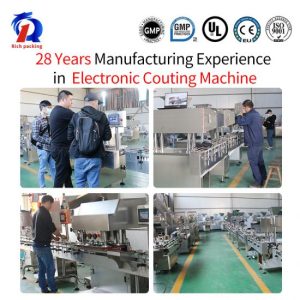Introduction to Semi-Automatic Encapsulation
A semi-automatic encapsulation machine bridges the gap between fully manual capsule filling and fully automated encapsulation processes. It combines human oversight with mechanical precision, enhancing capsule production without requiring the significant capital investment of fully automatic systems. This machine type is ideal for medium-scale production where flexibility and cost-efficiency are prioritized.
Key Components and Their Functions
The core components of a semi-automatic encapsulation machine include a capsule loading station, powder filling station, and a capsule closing system. Each component is designed to execute its part of the capsule filling process with precision, relying partially on human assistance for operation and supervision.
Capsule Loading and Orientation
The process starts with capsule loading. Operators manually place capsules into a loading tray where the machine separates the capsule bodies from their caps. This tray is then inserted into the machine, where a vacuum system aligns the capsules in the correct orientation for filling. This setup ensures that capsules are ready to receive the powder without mix-ups or misalignments that could affect the final product quality.
Precision Powder Filling
At the heart of the semi-automatic encapsulation machine is the powder filling station. Here, a precise dosing system dispenses the correct amount of product into each capsule. The dosing accuracy is critical and is typically maintained within a narrow margin to ensure each capsule contains the exact amount of active ingredient required. The dosing system can handle a range of powder densities and granule sizes, making the machine versatile across various formulations.

Reliable Capsule Closing
After filling, the capsules are transferred to the closing station where the bodies and caps are rejoined. This part of the process must be handled with care to avoid damaging the capsules or misaligning the caps and bodies, which could lead to leakage or contamination. The machine applies a controlled force to seal the capsules, ensuring they are ready for packaging.
Enhanced Production Throughput
One of the significant advantages of using a semi-automatic machine is the enhancement in production speed compared to manual methods. While not as fast as fully automated systems, a semi-automatic machine can significantly increase output, often capable of processing several thousand capsules per hour. This increase in throughput can dramatically improve production efficiency and reduce per-unit costs.
Flexibility and Ease of Use
Semi-automatic machines are popular in industries where production demands vary. They allow for easy changeovers between different capsule sizes and types, which is perfect for manufacturers who produce a variety of products. The learning curve for operating these machines is minimal, and they require less maintenance than their fully automatic counterparts, making them a practical choice for many businesses.
Final Thoughts
Investing in a semi-automatic encapsulation machine is a wise decision for businesses looking to scale up their production capabilities without the hefty investment required for fully automated systems. These machines provide a balanced blend of automation and control, allowing for increased productivity, consistency in product quality, and operational flexibility. As businesses grow and production needs evolve, a semi-automatic machine can adapt to changing demands, proving itself a valuable asset in the manufacturing process.
